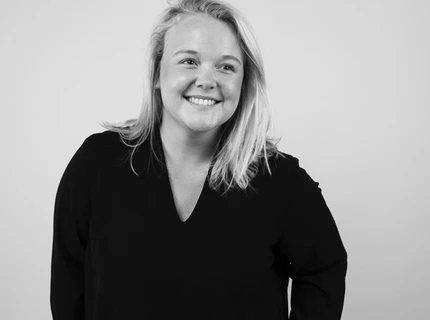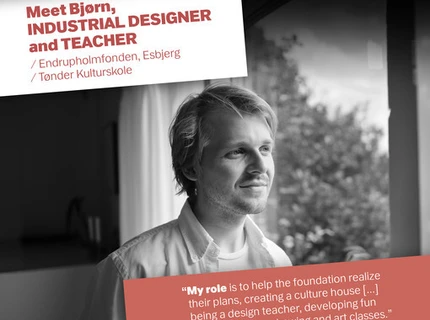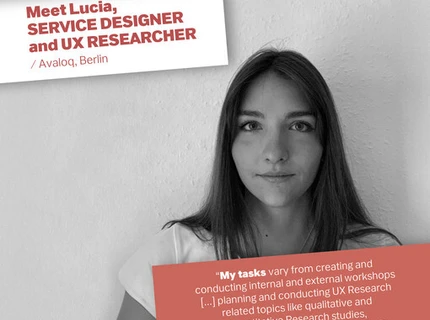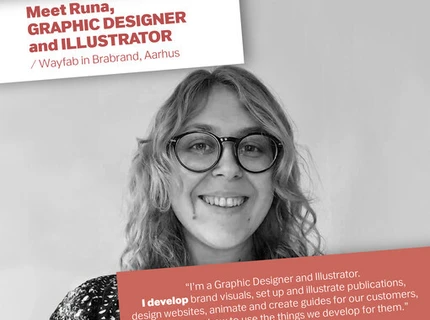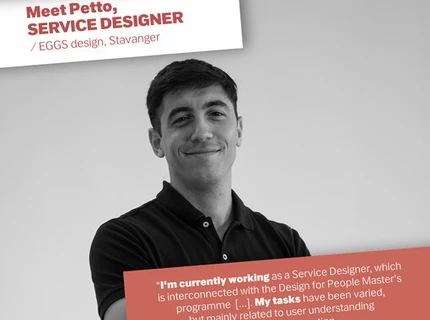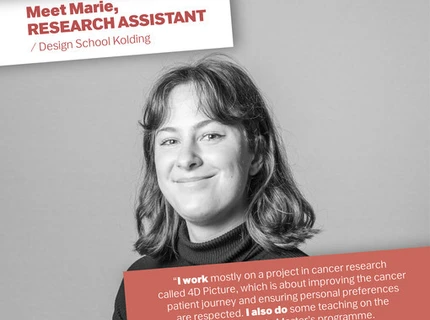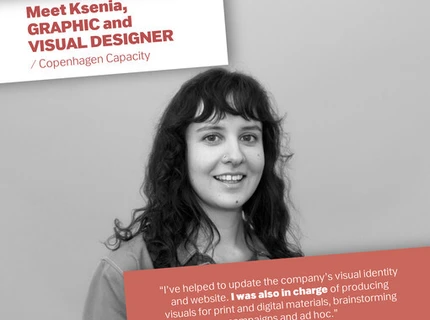
Meet Design for People alumnus Linda Domke
Where do you work at the moment?
I work at a German venture builder that builds startups and digital products. Most startups fail after five years so extensive research on users’ needs is necessary to minimize economical risks, but also to create sense-making products for the end user.
What is your role and what are your tasks?
My position is called Product Expert - UX / Service Design. We conduct design and development sprints within an interdisciplinary team of product experts, software engineers and venture architects. I’m responsible for facilitating user research to explore new opportunity fields for our clients, but also prototyping ideas and eventually designing user experiences (services and digital interfaces) to test them with real users. I analyze findings and present insights to clients or my interdisciplinary team, so we have a base for our decision-making process, making sure our product is adapted according to the users’ needs. For example, my team is working with a big German home improvement store. We’re exploring opportunity fields in sustainable living and housing and enabling users to modernize homes in order to live more sustainably. For this we are designing and testing new services and digital tools.
What role has the Design for People Master’s programme played in getting you where you are today?
I’ve learned skills in qualitative research, explorative research, conceptualizing design processes and conducting social research. I learned about the concepts of social sustainability, design for social innovation and design to address social conflicts. I gained strong competences in facilitating research and co-creation of innovative products. I now have a skillset of co-creation methods and processes for working in interdisciplinary teams, also involving external stakeholders, designers, and non-designers. I learned also to evaluate and present research results and implement relevant insights into sustainable product concepts. Finally, I learned how to facilitate collaborations with external stakeholders in an international context and work with sensitive and underrepresented research participants.
In your experience, what role can designers play and what value can they bring to organizations that maybe don’t traditionally employ designers?
By connecting research and design, designers can contribute to any kind of innovation. By involving designers in any internal process, they can help gain new insights in temporary obstacles, make multiple perspectives of users, patients, clients or other stakeholders visible and advocate for groups that have been overlooked in everyday life. Designers also have the ability to imagine future solutions and have the tools to quickly prototype them to make them tangible to initiate a discussion around possible futures.
How would you explain your gains and learnings from your education at Kolding School of Design to non-designers?
As a social designer and graduate from Kolding School of Design, I learned relevant skills to create products for a socially sustainable future. I learned methods and competences to conduct research on the real needs of people, that sometimes are hidden and not obvious. As a designer I can now conceptualize strategies to address these by prototyping a new service or product that might lead to a solution or raise awareness about the issue in society.

